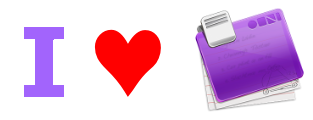
Some years ago I decided to pull my gloves on and take care of the clutter in my life once and for all. Now, older and wiser, I’ve come to see that years of bad organizational habits are not easily undone.
Lest you think I’m a slob, I want you to know that I’ve been a neat freak since about age 10, and in high school one of my proudest possessions was a 2-drawer filing cabinet. Unfortunately neatness, cleanliness, and basic orderliness are inadequate without a well-thought plan. Sooner or later, depending on the volume of potential clutter, every overlooked detail in your organizational scheme will become a magnet for chaos. Once chaos begins to collect, it snowballs.
A while back I made one of my best organizational investments in the form of a book: Getting Things Done, by David Allen. I’ve written about it before. While in Sweden, I was laughing with my friend Daniel that—insert a little nervous chuckle here—I’ve never finished the book. The good news is that, despite not completing it (yet), the book set me on a good course. You could say it was because of the book’s advice that I had to set it aside. I had to focus on other things immediately.
I have recently become a huge fan of the software OmniFocus (available for Mac only). It is built around the “Getting Things Done” principles, and I say without hesistation that it is the best organizational application I have ever used. It makes Outlook’s Tasks look like a toy. Mind you, OmniFocus is not a productivity suite with e-mail, calendar, contact list, etc. It is simply an amazing, glorified to-do list manager. But what it does, it does extremely well.
I’ve been using OmniFocus at work and at home since the version 1.0 release came out. I don’t know what I’d have done without it. With dozens of projects to juggle, I’d be totally lost with just about any of the other to-do list programs I’ve seen. Instead, I’m able to keep focused and, generally speaking, on top of things.
For any OmniFocus users, or potential ones, out there, here are my hints and tips:
- In your Library (in the Planning mode), create subfolders called “Action List,” “Delegated List,” and “Someday-Maybe List.” These correspond to the respective concepts in the book Getting Things Done.
- Never create ambiguous tasks (“Complete the Jones project” ). Always break projects down into concrete steps (“Call Bob,” “Confirm dates with Peter,” “Gather data for progress report” ).
- Create sensible contexts. For me, the default contexts of “Phone” and “E-mail” are meaningless. I just put everything I do at my desk under “Desk.” Create contexts for people (your boss, your spouse), your places (home, work, nearby towns and cities), anything that is likely to be related to actions that you do regularly. You can create nested contexts. For example, I have a context called “3ABN,” and underneath it, all the different departments, and in each department the people I regularly work with. When I need to visit a particular person or department, I can quickly see what other items of business I can take care of at the same time.
- Create a context called “Unassigned” for projects you will assign to someone else.
- Pause all projects in the Someday-Maybe folder.
- Create a bin for miscellanous actions. I call mine “Singletons.” Set it to function in Single Action Mode (each action is a project unto itself).
- Create a bin in your Action List for use as a shopping list.
- Create a bin in your Delegated Items for order tracking. (This one sounds a little sloppy, but basically you are delegating the order fulfillment to the company, and are waiting on them to ship you the products.)
- Create automatic, repeating actions and projects for those things you do regularly.
- It really helps to have a multiple-monitor setup, so you can have several windows open at once. I have a list by context, a list by priority (flagged), and a master list on screen at once.
- Add shortcuts/aliases to your documents and folders in your OmniFocus projects. This saves a lot of time, since you don’t have to switch to the Finder and find the related items every time you return to a project.
- Do the weekly review! OmniFocus has a built-in feature to make this really easy.
I’ve been using OmniFocus for qutie a while now. So if you decide to try it out, and have any questions or problems, send me a note and I’ll be glad to help.
